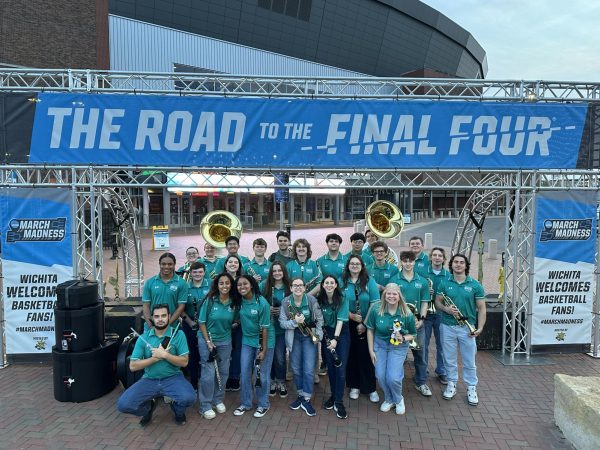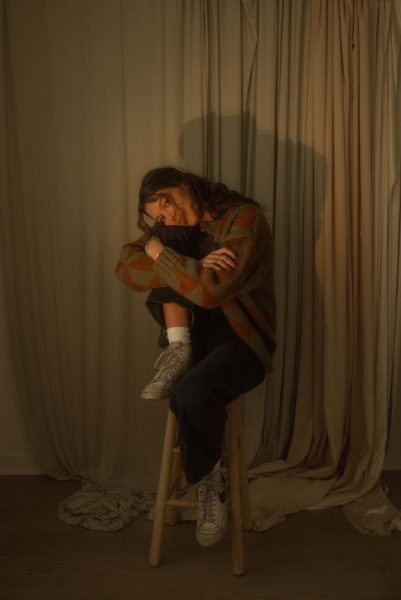Exposing the light and mystery of the North Carolina coast
Art department assistant professor Courtney Johnson currently has an exhibit of underwater photographs titled “Light Lure: Underwater Pinhole Photographs of North Carolina Piers,” in the Cultural Arts Building Art Gallery through Feb. 22.
Johnson’s photographs were captured by lowering low-tech pinhole cameras, constructed out of wafer cookie tins, fishing lines, weights and waterproof putty, into the ocean off 19 N.C. fishing piers.
“I’m very much interested in alternative processes and experimental photography where you’re trying to do things with photography that have never been done before; seeing new things and figuring out new ways to push the medium of photography,” Johnson said.
Prior to this project, Johnson had been making pinhole cameras with her photography students during the first couple weeks of each semester. This is her second year at UNCW, and after working with this type of camera for an extended period of time, she was able to adapt the normal pinhole camera into an underwater one.
When Johnson first moved to the area, she struggled with the idea of how she could capture the coast-or anything, for that matter-that highlighted the area’s unique qualities in a new way.
Once the cameras were underwater, she used a pineapple juice can, which was placed on top of her lightproof tin, in order to act as a shutter and capture the images in 30-minute long exposures. Johnson used the images to expose the historic aspects of the coast, which had yet to be exposed in such close detail, according to her.
Her project was funded by a Charles L. Cahill Research grant, after she proposed it to the board back in October, 2011. She began her testing in January, 2012 and shot her first images during the first week of the following May.
Typically, she would travel to two or three piers a day, traveling up to two hours north or south of Wilmington. Johnson said she was even able to capture images off an Outer Banks pier, just three days before Hurricane Sandy destroyed it.
Johnson described her project as applying to the basic principles of light within physics, classifying her images as strange and abstract.
By engaging in this project, Johnson was also able to learn the history of N.C. piers.
“The piers are diminishing in number, and I feel that they’re such a valuable research that I’m hoping this project brings interest and attention to the piers,” Johnson said.
Through the project, Johnson connected with the community-not only learning about the history of N.C. piers, but also about fishing and the many types of fish that exist along the coast.
“I loved it. I had such a good time doing this. I tend to work primarily in my studio, so this was a new experience for me being very much working outside,” Johnson said.
Johnson hopes students and the larger community who engage in her exhibit, are able to appreciate the beauty of the N.C. piers.








